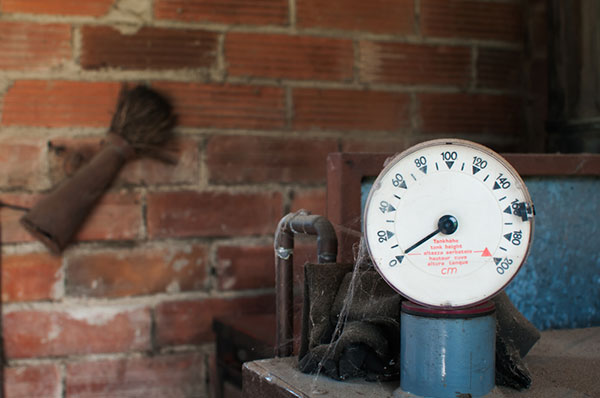It depends. Though often thought of as a simple, cheap solution for heating needs, there are a number of factors to consider when deciding between wood stoves and central heating units.
While the initial cost of a central heating system can be quite high compared to the purchase of a wood stove, over time, it may prove to be more economical. This is due to the fact that, while there are upfront costs associated with the installation and maintenance of a central heating system, it is much more efficient than a wood stove, and will ultimately result in lower energy costs over time. Additionally, central heating systems are typically better at providing even temperatures in multiple rooms throughout the home, unlike a wood stove which may only warm one or two areas. Central heating systems also tend to require less regular maintenance than wood stoves, which often need to be checked for creosote buildup and other potential issues. Ultimately, when considering the long-term costs associated with the purchase and upkeep of both systems, it is likely that a central heating system will prove to be more cost-effective in the end.
Wood Stove vs Central Heating
| Wood Stove | Central Heating (gas) | |
| Lower initial cost | ✅ | ❌ |
| Lower on-going maintenance | ❌ | ✅ |
| Lower costs over time | ❌ | ✅ |
| Easier heat control | ❌ | ✅ |
| Better for larger areas | ❌ | ✅ |
| Better in spreading heat evenly | ❌ | ✅ |
| Healthier and cleaner | ❌ | ✅ |
Fire has been used for cooking and heating since the stone age, but with the advent of modern amenities such as central heating, not every home heats with wood. In fact, it is estimated that roughly 7.5% of homes in the UK heat with wood and just 2.3% claim wood is the sole heating source for their home. Modern homeowners tend to enjoy the set it and forget it mentality of central heating units, but things are beginning to change.
What Changed?
The above statistics were compiled for the year 2015 and, as we all know, a lot has transpired since that year. Energy costs have skyrocketed and are showing no signs of returning to any type of normal. Homeowners are required to simply ride the ever present energy increase or heat their homes in a different way.
The Modern Wood Burning Stoves
For centuries wood burning stoves have been used to heat homes across the globe. Those extremely chilly nights are made far more bearable by the warm glow of wood burning inside the stove. Wood burning stove manufacturers have seen a substantial increase in demand for their products in 2023. Homes that once used only central heating systems are having new, modern wood burning stoves installed as fast as manufacturers can make them.
The notion of cutting and gathering your own wood might be a bit of a stretch for some homeowners, but more and more individuals are rolling up their sleeves and utilising this amazing way of heating. A large load of wood is easy to store and provides lasting fuel to heat your home on the coldest of nights and people today are realizing the variety of benefits of using a wood burning stove.
Current Energy Costs
Although energy costs vary by area, generally, energy costs are about £2500 per year, but anticipation of demands on the power grid have some experts expecting at least a £500 rise in energy costs this year alone. A wood burning stove has been proven to cut energy costs without giving up on the need for warmth and comfort.
Electricity – 39.21p per KW
Gas – 12.81p per KW
Wood – 10.37p per KW
Heating Ability
Central heating units have one thing above wood burning stoves that make them enticing to many homeowners. They heat the whole home where wood burning stoves tend to only heat one room. However, modern wood burning stoves have become phenomenally efficient and some manufacturers claim their units can actually be used for whole home heating.
However, even though a wood burning stove may heat just one room, their ability to drive down energy costs is unparalleled. Even when used in accordance with central units, homeowners will notice a drastic drop in their overall heating costs. For every 1C drop in your homes temperature, roughly 80 pounds annually can be saved. It makes sense to set your thermostat low for those very cold nights and allow the wood burning stove to assist your central unit in warming the home.
Wood burning stoves not only heat up efficiently while burning, but due to their use of ventilation, they have proven to be up to 80% more efficient than a standard fire place or fireplace insert. Not only do their heat up quickly, but maintain residual heat as coals begin to die out. Wood burning stove users can allow the fire to diminish during the night and stoke the flames in the morning to revive the stove without much effort.
Initial Cost Worries
Initially, the price tag for a wood burning stove can be shocking. The units sell for between £400 and £2,000 generally. Basically, the more you spend on the unit, the more efficient it will be. Additional costs come in for converting a home for the use of a wood burner. Some units may allow for the smoke stack to be placed through the wall, but others do require a full chimney system. Conversion can cost up to £3500 (or even more).
Although the initial costs are high, the rising costs of monthly energy expenses is substantial. Homeowners throughout the UK are naturally turning away from central units to save monthly. It is safe to say, a wood burning stove is a long term investment. However, having one installed in your home can drastically increase the value of your home while reducing your dependance on and expense of a central unit.
Rule for Wood Burning Stoves
There was a time where wood burning stoves were banned in some areas, but that is no longer the case. Wood burning stoves that meet green Ecodesign criteria are allowed in all areas. The criteria states where the stove may be placed in the home and maintains high fire safety regulations for areas around the stove.
Wood burning stoves are in fact cheaper, monthly than central heating units. The initial costs can be a lot to take in, but a wood burning stove will give back for years and years without the need for a lot of maintenance. If you want to reduce your monthly energy expenses, a wood burning stove is certainly the way to go.
Conclusion
All in all, when it comes to the cost comparison between wood stoves and central heating units, it is likely that a central heating system will be more economical in the long run. While their initial cost may seem daunting, they are much more efficient in terms of energy usage and require less regular maintenance than a wood stove. Therefore, while a wood stove may be an ideal solution for a smaller home or those on a tight budget, central heating systems may provide the best value in terms of overall costs.
The final decision depends on individual circumstances and preferences, but it is important to consider all factors before making a purchase. Ultimately, while wood stoves may seem like the more economical choice at first, they may not be the most cost-effective option in the long run.







